Bioinformatics-based analysis reveals elevated CYTL1 as a potential therapeutic target for BRAF-mutated melanoma
- PMID: 37745303
- PMCID: PMC10516578
- DOI: 10.3389/fcell.2023.1171047
Bioinformatics-based analysis reveals elevated CYTL1 as a potential therapeutic target for BRAF-mutated melanoma
Abstract
Introduction: Despite many recent emerging therapeutic modalities that have prolonged the survival of melanoma patients, the prognosis of melanoma remains discouraging, and further understanding of the mechanisms underlying melanoma progression is needed. Melanoma patients often have multiple genetic mutations, with BRAF mutations being the most common. In this study, public databases were exploited to explore a potential therapeutic target for BRAF-mutated melanoma. Methods: In this study, we analyzed differentially expressed genes (DEGs) in normal tissues and melanomas, Braf wild-type and Braf mutant melanomas using information from TCGA databases and the GEO database. Subsequently, we analyzed the differential expression of CYTL1 in various tumor tissues and its effect on melanoma prognosis, and resolved the mutation status of CYTL1 and its related signalling pathways. By knocking down CYTL1 in melanoma cells, the effects of CYTL1 on melanoma cell proliferation, migration and invasion were further examined by CCK8 assay, Transwell assay and cell migration assay. Results: 24 overlapping genes were identified by analyzing DEGs common to melanoma and normal tissue, BRAF-mutated and BRAF wild-type melanoma. Among them, CYTL1 was highly expressed in melanoma, especially in BRAF-mutated melanoma, and the high expression of CYTL1 was associated with epithelial-mesenchymal transition (EMT), cell cycle, and cellular response to UV. In melanoma patients, especially BRAF-mutated melanoma patients, clinical studies showed a positive correlation between increased CYTL1 expression and shorter overall survival (OS) and disease-free survival (DFS). In vitro experiments further confirmed that the knockdown of CYTL1 significantly inhibited the migration and invasive ability of melanoma cells. Conclusion: CYTL1 is a valuable prognostic biomarker and a potentially effective therapeutic target in melanoma, especially BRAF-mutated melanoma.
Keywords: BRAF mutations; CYTL1; cell migration and invasion; melanoma; molecular biomarker.
Copyright © 2023 Tao, Cui, Sun, Cao, Dai, Ge, Zhang, Ma and Liu.
Conflict of interest statement
The authors declare that the research was conducted in the absence of any commercial or financial relationships that could be construed as a potential conflict of interest.
Figures
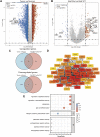

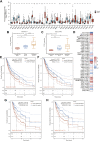
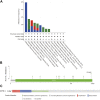
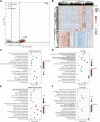
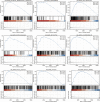
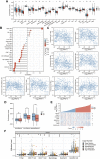

Similar articles
-
Bioinformatics-based analysis reveals elevated MFSD12 as a key promoter of cell proliferation and a potential therapeutic target in melanoma.Oncogene. 2019 Mar;38(11):1876-1891. doi: 10.1038/s41388-018-0531-6. Epub 2018 Nov 1. Oncogene. 2019. PMID: 30385854 Free PMC article.
-
TEAD4 functions as a prognostic biomarker and triggers EMT via PI3K/AKT pathway in bladder cancer.J Exp Clin Cancer Res. 2022 May 17;41(1):175. doi: 10.1186/s13046-022-02377-3. J Exp Clin Cancer Res. 2022. PMID: 35581606 Free PMC article.
-
Cytokine-Like Protein 1 (CYTL1) as a Key Target of M-Stage Immune Infiltration in Stomach Adenocarcinoma.Biomed Res Int. 2023 Feb 13;2023:2926218. doi: 10.1155/2023/2926218. eCollection 2023. Biomed Res Int. 2023. PMID: 36825034 Free PMC article.
-
BRAF mutational status as a prognostic marker for survival in malignant melanoma: a systematic review and meta-analysis.Acta Oncol. 2020 Jul;59(7):833-844. doi: 10.1080/0284186X.2020.1747636. Epub 2020 Apr 14. Acta Oncol. 2020. PMID: 32285732
-
Vemurafenib.Recent Results Cancer Res. 2014;201:215-25. doi: 10.1007/978-3-642-54490-3_13. Recent Results Cancer Res. 2014. PMID: 24756795 Review.
Cited by
-
Single-cell transcriptomic landscape of sciatic nerve after transection injury.J Neuroinflammation. 2025 Aug 23;22(1):205. doi: 10.1186/s12974-025-03514-3. J Neuroinflammation. 2025. PMID: 40849669
References
-
- Cerami E., Gao J., Dogrusoz U., Gross B. E., Sumer S. O., Aksoy B. A., et al. (2012). The cBio cancer genomics portal: an open platform for exploring multidimensional cancer genomics data. Cancer Discov. 2 (5), 401–404. 10.1158/2159-8290.CD-12-0095 - DOI - PMC - PubMed
LinkOut - more resources
Full Text Sources
Research Materials

